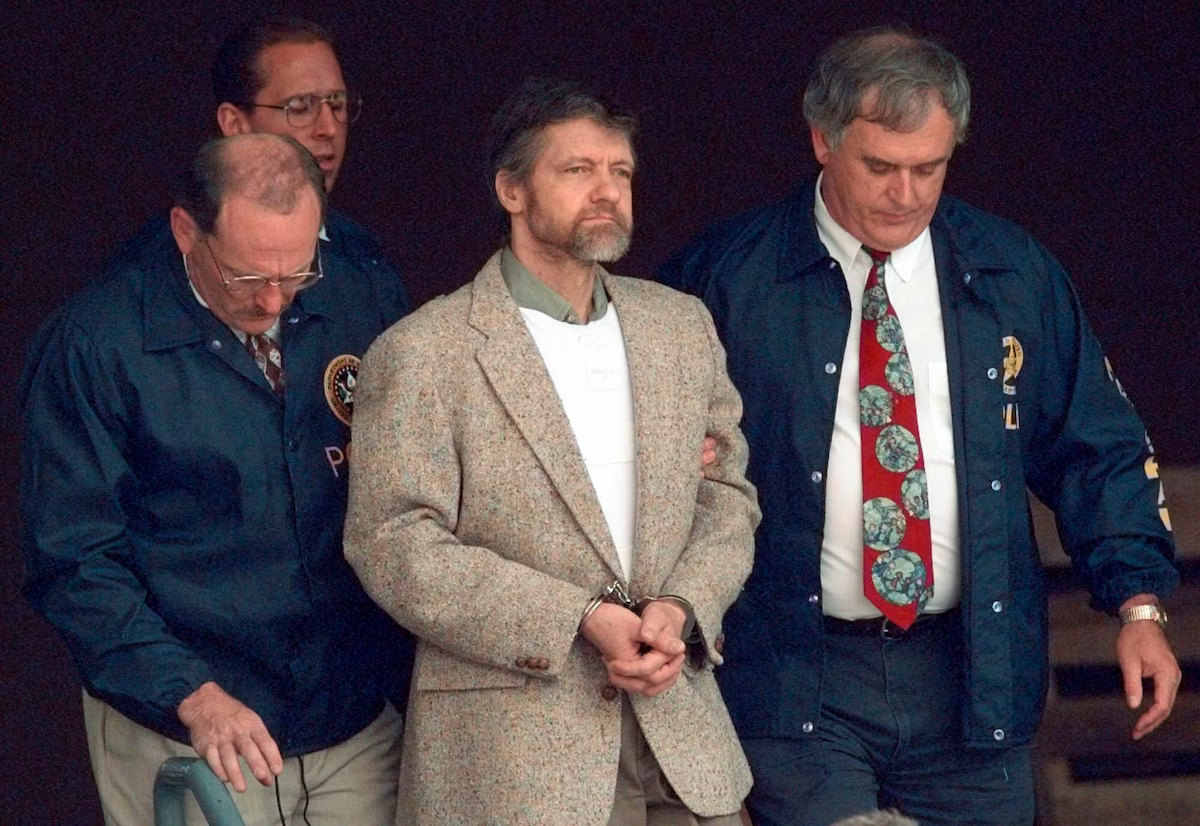Andrea Salcedo
In 1995, The Post weighed whether to print the Unabomber’s manifesto

David Kaczynski agreed to read the Unabomber’s ponderous anti-technology manifesto to ease his wife’s concerns. There was no way his brother was the anonymous killer terrorizing the country with meticulously crafted pipe bombs, Kaczynski thought before taking a look at the insert published by The Washington Post on Sept. 19, 1995.
But phrases within the 35,000-word essay calling for a worldwide revolution against technology stood out to David. It was strikingly similar to the language his brother, Ted Kaczynski, had used in their own correspondence, and it was enough for David to tip off federal authorities, he recounted years later in an interview with Oprah Winfrey.
Before he was the Unabomber, Ted Kaczynski was a mind-control test subject
Unbeknown to the majority of the country, leaders at The Post and the New York Times spent months debating whether to agree with the Unabomber’s demand that they publish the full manuscript before his deadline. Failure to do so, the Unabomber threatened, would result in a bomb sent to an unspecified destination “with intent to kill.” After meetings at the FBI headquarters in Washington, the newspapers agreed to publish the essay in a special edition of The Post. Federal officials, including FBI Director Louis J. Freeh and Attorney General Janet Reno, said publishing the essay could end the attacks and potentially offer leads that would finally end the decades-long search for the Unabomber.
The decision, which did indeed lead to an arrest less than seven months later, was carefully weighed, recalled Leonard Downie, The Post’s executive editor at the time. He spoke by phone Saturday after news broke that Ted Kaczynski had died while serving consecutive life terms for the three people he killed and 23 others he injured between 1978 and 1995.
“If we didn’t publish it, he’d go and kill more people,” Downie told The Post. “And if we did publish it, it raised the question whether a decision to publish something in the paper was being dictated by a terrorist. That was a very difficult decision.”
It was during this period when Downie and then-Post publisher Donald E. Graham, along with top leaders from the Times, including publisher Arthur O. Sulzberger Jr., met with federal officials at the FBI’s headquarters on at least three occasions, Downie said. The rest of the newsroom, which did not take part in the discussions, waited for news to break during what Marc Fisher, a senior editor at The Post who covered the case for The Post’s Style desk back then, called an “awkward” and at times “uncomfortable” period for the paper.
“It was a confusing time because, as a news organization, we didn’t want to be used either by [the Unabomber] or by the authorities,” Fisher said in an interview.
In meetings, leaders of both papers pondered how to publish the manifesto in a responsible way, without promoting a serial bomber as an author and with the proper context to inform readers.
At a coffee shop meeting in D.C., it was Graham who suggested they publish the manifesto as a pullout section of The Post — with a different type and layout that would set it apart from the news, according to Downie. The Times agreed to split the printing costs, though it never published the manuscript.
The Post ran it in late September 1995. A copy of the original manifesto is stored at the Library of Congress.
The hunt for four missing nuclear bombs after a B-52 crash
When asked whether the decision to run a manifesto in one of the most prominent newspapers in the world would have been different post-9/11 and in today’s political climate, Downie swiftly interjected: “I never engage in hypotheticals. … There was a lot of criticism from journalism professors who said we had given in to a terrorist, but it was a good idea because the Unabomber’s brother did see it as a result of The Post’s publishing.”
The best-case scenario, indeed, came to fruition. A key phrase ultimately stood out to David Kaczynski as he read through the lengthy manifesto. It was a phrase his brother Ted had used before: “coolheaded logicians.”
Like both The Post and the Times, David Kaczynski also faced an ethical dilemma after the phrase stuck out to him.
“If we did nothing, we might wake up some day and realize, ‘Hey, somebody died because we had failed to act.’ In that case, we had the blood of innocent people on our hands,” David told Oprah in a 2o15 interview. “On the other hand, there was the realization that if I turned Ted in, he’d committed three murders, he was the most wanted person in America. He could be executed. I had to ask myself what it would be like to go through the rest of my life with my brother’s blood on my hands. Ultimately, we couldn’t live with ourselves if we failed to stop the violence.”
David Kaczynski and his wife recruited an attorney and sent their tip to the FBI.
